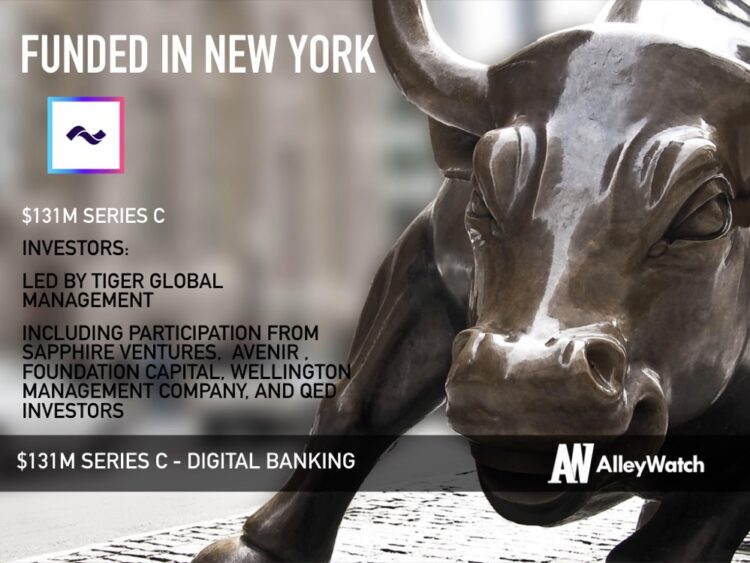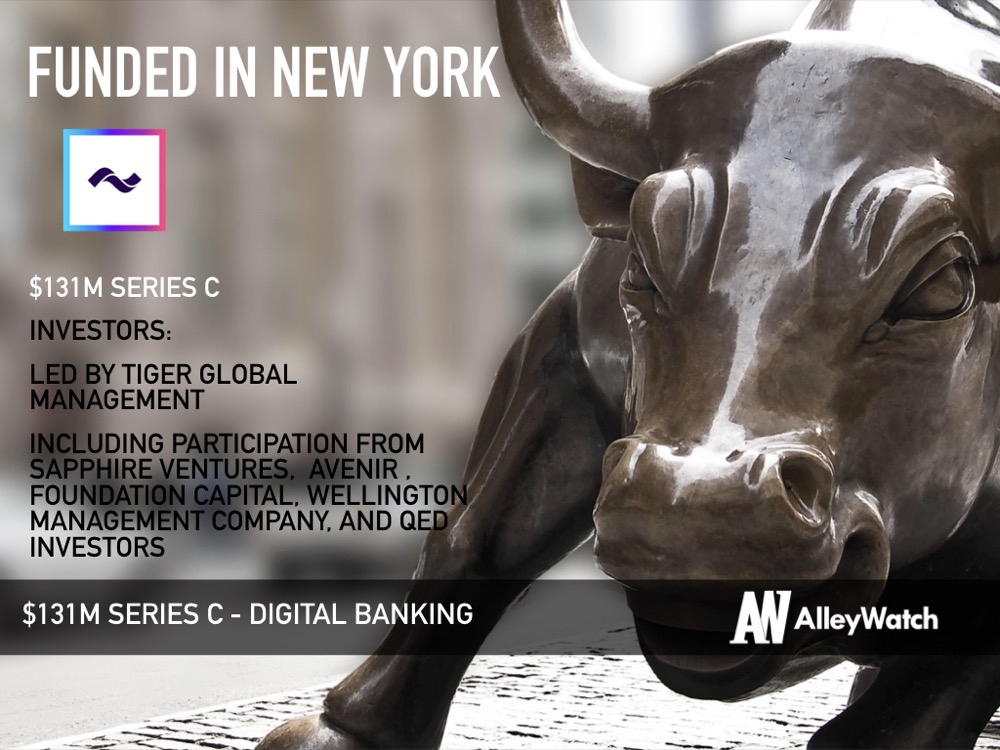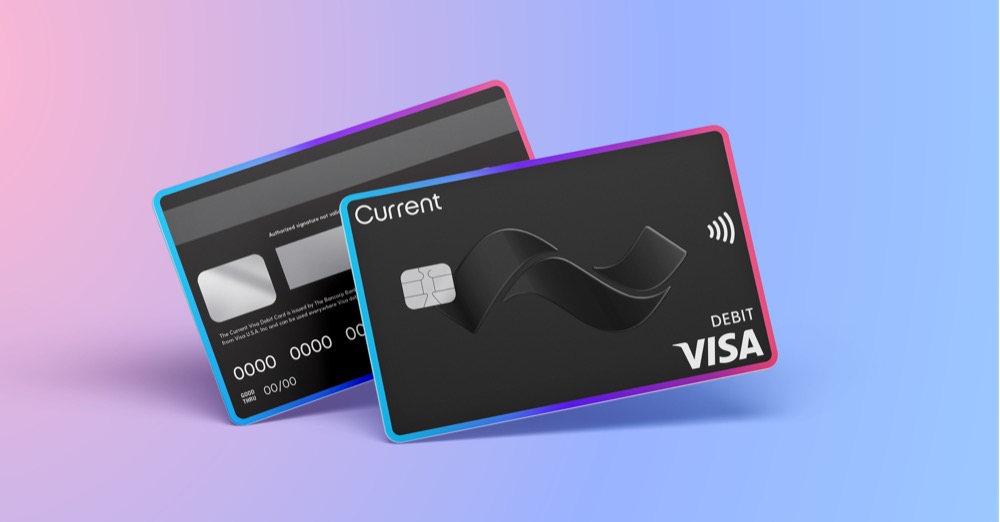The current banking system in the US isn’t structured to help the 130M+ Americans that are living paycheck to paycheck to succeed, instead banks focus on large depositors to support their lending businesses. Current is the digital challenger bank that directly addresses this mismatch by focusing on liquidity and providing access to banking services that include the ability to deliver paychecks up to two days early with direct deposit, no overdraft fees, and earn cashback. The company’s platform is designed to be inclusive for all Americans regardless of age or income level, especially the younger generation; the average age of a Current checking account member is 27 and approximately 50% of its members have never had a bank account before. In April during the height of the pandemic, Current was the first bank to credit government stimulus, delivering it five days faster than traditional banks, and also quickly processed unemployment benefit payments.
AlleyWatch caught up with CEO and Founder Stuart Sopp to learn about Current’s response during the pandemic, simple mission to get money to its customers as fast as possible, impressive user growth, and recent funding round, which brings the total funding raised to $182.4M across three rounds.
Who were your investors and how much did you raise?
We raised $131M for our Series C, led by Tiger Global Management. New investors Sapphire Ventures and Avenir also joined the round and Foundation Capital, Wellington Management Company and QED Investors returned to fund the company.
 Tell us about the product or service that Current offers.
Tell us about the product or service that Current offers.
We’re a challenger bank focused on serving Americans who have been overlooked by traditional banks. We are committed to building products specifically to improve the financial outcomes of the millions of hard-working Americans who live paycheck to paycheck and to provide them faster and better access to their money. We offer them checking accounts without hidden fees, overdraft fees, or minimum balance requirements. We get them their paychecks up to two days early with direct deposit, provide free overdraft, give them the ability to earn cashback with our points rewards system, provide access to over 55,000 free ATMs nationwide as well as tools to help manage their money. Every product we build is designed to help get money back in their pockets as quickly as possible and help close the growing wealth inequality gap in this country.
What inspired the start of Current?
I grew up in the UK and was a macro trader for 16 years, living around the world, including Australia, Singapore, Hong Kong, working for Morgan Stanley, Citi, and Deutsche Bank. I was responsible for a large part of Morgan Stanley’s trading business in foreign exchange. I moved to the US in 2011 and as a transplant from another country, I learned that America had an interesting banking problem in that access to banking was not very easy, unlike in Europe. Banks focus on deposits and their main focus is to accumulate deposits to lend that money out but over a third of all Americans were living paycheck to paycheck. I wondered why aren’t people focusing on a free bank account and access to banking? From that worldview as a macro trader to this new technology, I started to build an idea that the financial inequality gap could be addressed with new technology and mobile-first banking with a focus on liquidity.
How is Current different?
At Current, we built our own banking core technology, called the Current Core. We started early, in 2015, when there were few third parties. Having our own proprietary technology puts us closer to the money than other fintechs and provides us both stability and industry-leading cost savings that we pass on to our members. Building our own technology has dramatically lowered the cost of maintaining accounts to about 15 cents per customer from about $8-$10 for traditional banks that are built on legacy infrastructure. We do 99 percent of our own processing, we have the ledger of record, ACH origination, networking, and work with three issuing banks, which allows us to be deposit agnostic and provide banking services to all Americans, regardless of age or income level, with a focus on our core demographic of the over 130 million Americans in this country who live paycheck to paycheck.
Our members are much younger than other fintechs and we have a teen banking product as well. For our checking account members, the average age is 27, and we do very well at 18 to 23. Many members are people working at Walmart, Amazon, Doordash, UPS, nurses and in the military, what we now call essential workers.
Other challenger banks are typically focused on people who are a little older and earn more money. We’re onboarding people onto the financial system as over 50 percent of our members have never had a bank account before. This generation needs banking services, not a bank. People who live paycheck to paycheck and live on debit rails, they don’t have flexibility to pay bills with credit cards. They need access to liquidity, and we use technology to get them money faster, cheaper, help them manage their money, and save when they spend. It’s why people choose us over prepaid, cash, and other fintechs and banks.
What market does Current target and how big is it?
Our core demographic is Americans who have been overlooked by traditional banks and live paycheck to paycheck, which is over 130 million people in this country. It’s important for them to get access to their money and paychecks as quickly as possible because then they’re able to avoid late payments and fees on assorted bills, like their phone or utilities, which can snowball and keep people in cycles of debt. Getting money into their pockets sooner means they can pay their bills on time, buy groceries, necessities, and not go into penalties.
What’s your business model?
Our business model is based on spend. We have a subscription model for two of our three products (one is totally free) and also earn money from interchange fees when our members swipe their cards. Having a business model based on spend allows us to bank people who live paycheck to paycheck because we do not need to accumulate deposits to lend out like traditional banks.
How has COVID-19 impacted the business?
The pandemic has been an accelerant to digital banking and it’s been a business strategy accelerant for challenger banks like Current. You don’t want a global crisis to validate your business model, but we were able to serve people in a time of need. The economic trends signal a larger, fundamental shift in the workforce that highlighted the need for faster access to money, which can be solved through financial technology. We were able to deliver on our promises to our members to get them their money faster at times many needed it most this year.
We were the first to credit government stimulus checks back in April, which was five days faster than traditional banks, using our own balance sheet to make all funds available to all our members right away. We got them their unemployment benefits faster and were able to quickly pivot to build dedicated sections in our app to help our members both file forms for their unemployment and stimulus checks.
We were the first to credit government stimulus checks back in April, which was five days faster than traditional banks, using our own balance sheet to make all funds available to all our members right away. We got them their unemployment benefits faster and were able to quickly pivot to build dedicated sections in our app to help our members both file forms for their unemployment and stimulus checks.
We’ve seen exponential growth this year, doubling our member base from 1 million in June to now over two million in less than six months, and we’re very proud of the trust we’ve built with our members.
What was the funding process like?
The fundraise process has a lot less travel than usual! Venture firms are being much more proactive in the outreach and have content and social strategies to maintain deal flow. I think in a lot of ways it has got VCs more comfortable funding outside of San Francisco, That being said, I had met IRL almost everyone who has put money into Current, even on this latest round.
What are the biggest challenges that you faced while raising capital?
Trust is a big factor when it comes to someone wiring a lot of money for equity in the company. Lots of communication is essential but is much harder to do now. It was also pretty hard to know who is looking to invest in the pandemic so waiting until the end of summer for clarity was a tough decision but ultimately the right move.
What factors about your business led your investors to write the check?
It is our unit economics and cost structure that every investor is focused on, and for Current, they are both sustainable. We are in a sector that is only just beginning to make inroads as household names, which is exciting, and the addressable market is gigantic. Everyone needs a good wedge and hyper-focus on the customer, which we have, as well as the ability to scale with good metrics.
What are the milestones you plan to achieve in the next six months?
Scale, scale, scale. Our product is in a good place, but we will focus on improving everything for 2021.
What advice can you offer companies in New York that do not have a fresh injection of capital in the bank?
You need to balance growth with your runway of course. If you can’t get there then look to do bridge rounds and make it exciting for someone to take some risk on you to get you to that metric you think you need to get that next round.
Where do you see the company going now over the near term?
Honestly, no different. More of the same. There are plenty of people in the U.S. with no access to financial products and we aim to change that.
What’s your favorite outdoor dining restaurant in NYC
Since they’re all outdoor now it opens it up! Lafayette is a good place for more formal dining and Dante for more social dining.
You are seconds away from signing up for the hottest list in New York Tech! Join the millions and keep up with the stories shaping entrepreneurship. Sign up today





